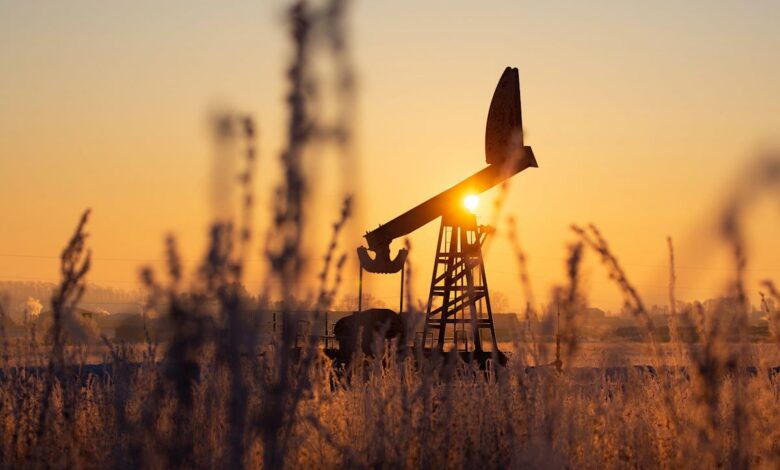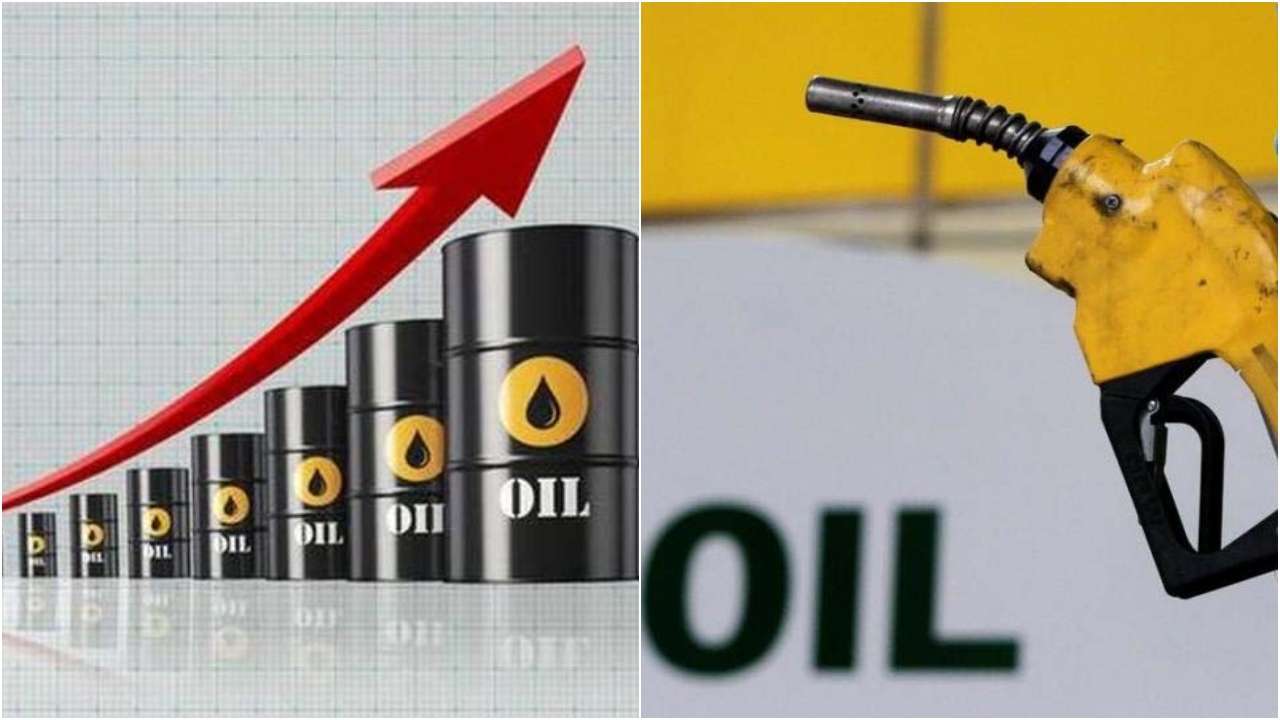Indian Crude oil touches a 10 year high

Indian crude oil touches a 10-year high. The crude oil that India buys has hit a decade high of $121 per barrel.
India’s crude oil has reached a ten-year high. India’s crude oil purchase price has risen to a decade high of $121 per barrel.
On June 9, the price of Indian crude reached $121.28. Matching levels were seen in February/March 2012, according to data from the energy ministry’s Petroleum Planning and Analysis Cell (PPAC).
According to PPAC (Petroleum Planning and Analysis Cell), the Indian basket of crude oil averaged $111.86 per barrel between February 25 and March 29, the period after Russia invaded Ukraine when oil prices surged.
There are two types of Oil Brent Crude oil and WTI ( West Texas Intermediate). Before moving ahead, we need to understand the difference between the two different types.
Brent Crude oil originates from oil fields in the North Sea between Shetland Islam and Norway.

West Texas International (WTI) is rated from U.S. oil fields, primarily in Texas, Louisiana, and North Dakota.
Both crude oil is relatively light, but Brent has a slightly higher API (American Petroleum Institute) gravity, making WTI the lighter of the two.
American Petroleum Institute ( API ) gravity is an indicator of the density of crude oil or refined products.
West Texas International (WTI) with a lower surplus content (0.24 per cent) and then Brent (0.37 per cent) is considered a “sweater”.
Brent Crude price is the international benchmark price used by OPEC, while West Texas Intermediate (WTI) crude oil price is a benchmark for U.S. oil prices.
Since India imports from OPEC countries, The Benchmark for detecting the oil prices in India is Brent.
The cost of Shipping for Brent Crude oil is typically lower since it is produced near the sea and can be put on ships immediately.
Shipping if West Texas Intermediate (WTI) is priced higher since it is produced in landlocked where the storage facilities are limited.
Now the next important topic that we need to analyze is what impact Will be seen in India when the price of oil increases.
Impact on India of Oil Hike price
Current Account Deficit:
The increase in oil prices will increase the country’s import bill. This will further disturb its current account Deficit. (Excess of import goods and services over exports )
Inflation:
The increase in crude prices could also further increase inflation pressures that have been building up over the past few months.
The Reverse loss will erode the government’s ability to spend or meet its fiscal commitments in the form of budgetary transfer to states, payments of dues and come station of revenue shortfalls to the state government under the Gross Domestic Product (GDP) Framework.
Economics Recovery:
As we all know that the hike in the price has influenced all over the world, Indian import bills get immensely affected by this hike in the international market, this will further result in the rise of inflation and increase the trade deficit, and this will slow down the growth of the economy.

India and other oil-importing nations have called for an OPEC plus to boost oil supply faster, arguing that elevated crude oil prices could undermine the recovery of the global economy.
To understand OPEC plus, We first have to understand OPEC. So let’s begin with OPEC in detail.
About OPEC
OPEC (The Organization of Petroleum Exporting Countries) consists of 13 members. It is an intergovernmental organization.
Since 1965, the headquarters has been in Vienna, Australia. However, Australia is not an OPEC member State.
A large group called OPEC + was formed in late 2016 to have more control over the global crude oil market. The demand for OPEC oil has fallen to 30 years low in the second water of 2020.

OPEC History
The OPEC (Orgaisatization of Petroleum Exporting Countries) is an extremely durable intergovernmental association that was created on September 10-14, 1960, by Iran, Iraq, Kuwait, Saudi Arabia, and Venezuela at the Baghdad Conference on September 10-14, 1960, by Iran, Iraq, Kuwait, Saudi Arabia, and Venezuela.
The five established nations were later joined by :
- Qatar – terminated its membership in January 2019.
- Indonesia – suspended its membership in January 2009, reactivated it in January 2016, but decided to suspend it again in November 2016.
- Libya; United Arab Emirates; Algeria; Nigeria; Ecuador (1973) – Suspended its membership in December 1992, reactivated it in October 2007 but decided to the draw its membership effective 1 January 2020
- Anglo (2007); Gabon (1975) – terminated their membership in January 1995 but rejoined in July 2016; Equatorial Guinea (2017); and Congo(2018).
When OPEC was formed in Geneva, Switzerland, it was the headquarters for five years then. This was further changed to Vietnam, Australia, on September 1, 1965.
OPEC – Mission and Members
The organization is also a significant provider of information about the international oil market.
The current OPEC Members are the following;
Algeria, Angola, Equatorial Guinea, Gabon, Iran, Iraq, Libya, Nigeria, the Republic of the Congo, Saudi Arabia (the De Facto leader ), the United Arab Emirates, and Venezuela
Former OPEC Members are the Equator, Indonesia, and Qatar.
OPEC – SECRETARIAT
The OPEC Secretariat is the executive body of OPEC, which is situated in Vietnam Located in Vietnam. It additionally works as the headquarters of the association.
It is responsible for the execution of all the resolutions passed by the conference. It also carries out all the decisions made by the board of Governors. This provides a key contribution to navigation.
The Secretariat consists of the secondary general, who is the organization’s Chief Executive Officer. It also includes staff as may be required for the organization’s operations. It also contains the office secretary-general, the legal office, the Research Division, and the Support Services Division.
In the Secretariat, the research division comprises data services, petroleum studies, and energy studies departments. The support Service Division includes Public Relations and information, finance and human resources, and administration and IT services departments.
OPEC – Functions
The Organization of the Petroleum Exporting Countries has a working methodology which is mentioned below ;
- The OPEC Member Countries adjust their oil production activities to bring stability to the petroleum market and help manufacturers get a good return on their investments. This also makes sure that the oil consumers should get a consistent and stable oil supply.
- Twice every year, the ministry of energy and hydrocarbon affairs meets twice a year to review the status is the international oil market and decide upon steps that will bring security to the oil market.
- The member countries also hold other meetings that address various points of interest, including that of petroleum and economic experts and specialized bodies such as committees and panels in charge of the environment.
OPEC – IMPACT
The formation of OPEC marked a turning point toward national sovereignty over natural resources, and OPEC decisions have played a prominent role in the global oil market and international relations.
The effect can be particularly strong when wars or civil discords lead to extended interruptions in supply.
OPEC Plus Countries
The non-OPEC countries which produce crude oil are termed OPEC oil plus countries.
OPEC Plus Countries include South Sudan, Sudan, Russia, Azerbaijan, Kazakhstan, Bahrain, Brunei, Malaysia, Mexico, Oman, and Sudan.
The mission of OPEC plus is to control and maintain the supply of oil to set the price of the world market.
As a cartel, the production of crude oil in the global market gets affected at any given time when the OPEC + Member countries collectively agree on how much oil to produce the production of crude oil in the global market at any given time.
Edited by Prakriti Arora





